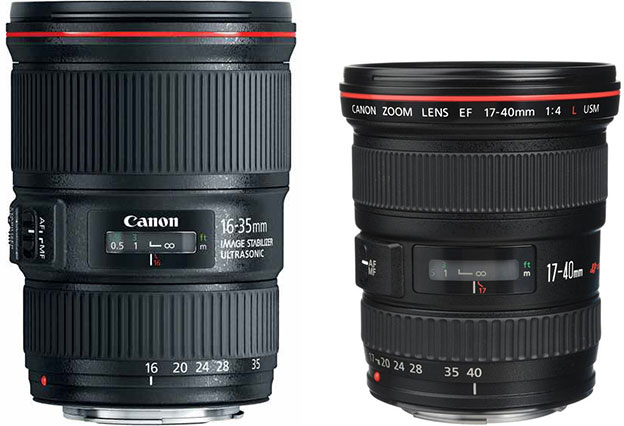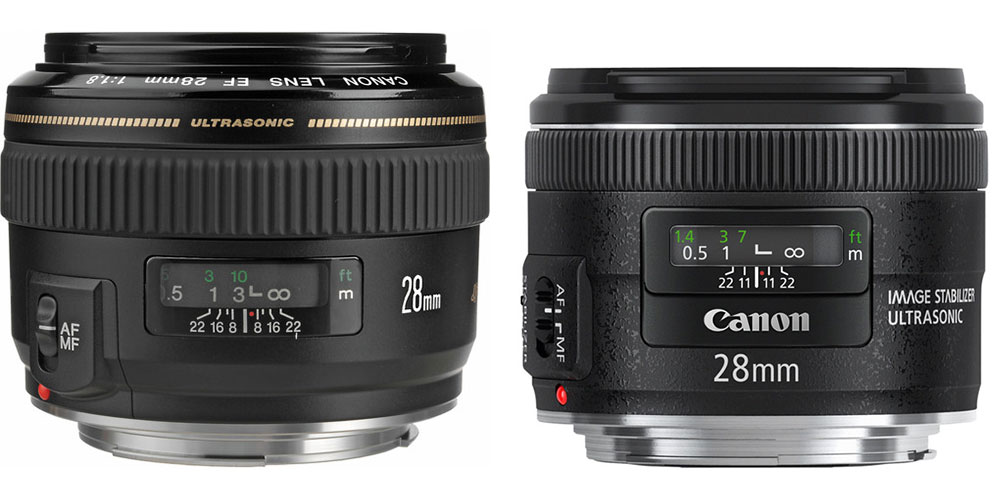
When Canon announced the EF 16-35mm f/4L IS USM lens I thought it would replace the Canon EF 17-40mm f/4L USM lens in their lineup. Well it has been quite some time and the 17-40mm is still strong in the lineup. So how do the two lenses compare? Read on to see my Canon EF 16-35mm f/4L vs Canon EF 17-40mm f/4L comparison.
Spoiler alert: The Canon EF 16-35mm f/4L IS USM is simply amazing and comes highly recommended.
Primary Differences
In the side by side image you can see the size difference in the two lenses. The 17-40mm lens is 0.63 inches shorter and weighs about 0.3 lbs less than the 16-35mm lens. The 16-35mm f/4L IS USM lens has 16 elements in 12 groups while the 17-40mm lens only has 12 elements in 9 groups.
The 16-35mm f/4L IS USM is FULLY weather sealed while the 17-40mm requires a front filter to help complete the sealing. Both lenses shift the front element within the lens body when zooming but the lens itself stays the same overall length.
Both lenses feature a circular aperture blade design for smoother out of focus areas. The 16-35mm has 9 aperture blades while the 17-40mm only has 7. This will affect the out of focus highlights with the 16-35mm appearing smoother and more circular. Both lenses have the same close focusing distance but the 17-40mm achieves a slightly higher 0.24x (vs 0.23x) magnification – thanks to the slightly longer 40mm focal length.
Canon EF 16-35mm f/4L vs Canon EF 17-40mm f/4L User Review Comparison
The overall user reviews for the two lenses are pretty close. The 16-35mm has an overall rating of 4.87 out of 5 stars. The 17-40mm lens rates 4.65 out of 5 stars. However, the 16-35mm lens has a staggering 91% of reviewers giving it 5 stars! The 17-40mm lens, for comparison, has 73% of reviewers giving it 5 stars. When you combine the 4 and 5 star totals, the 2 lenses are closer with the 16-35mm lens getting nearly 98% and the 17-40mm lens getting about 95%.


